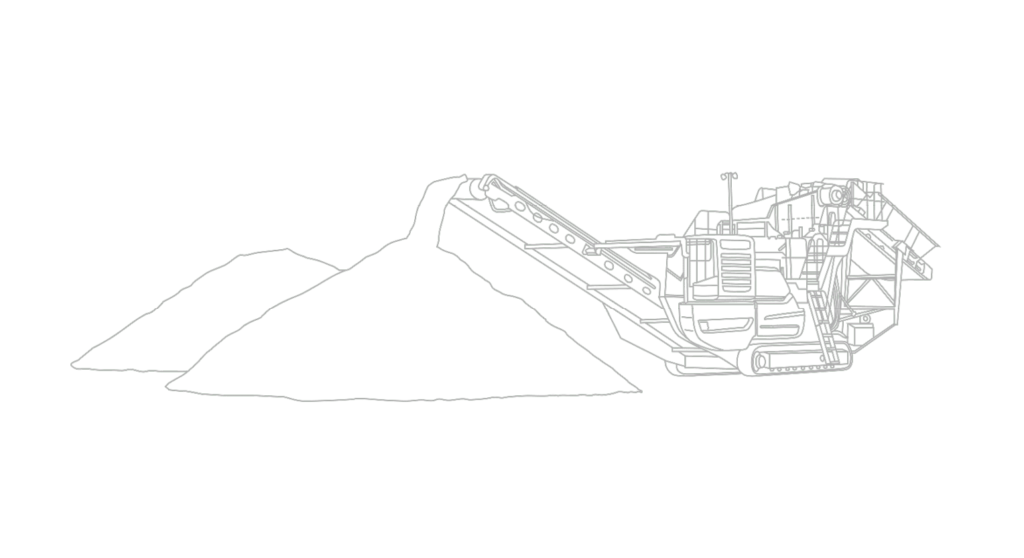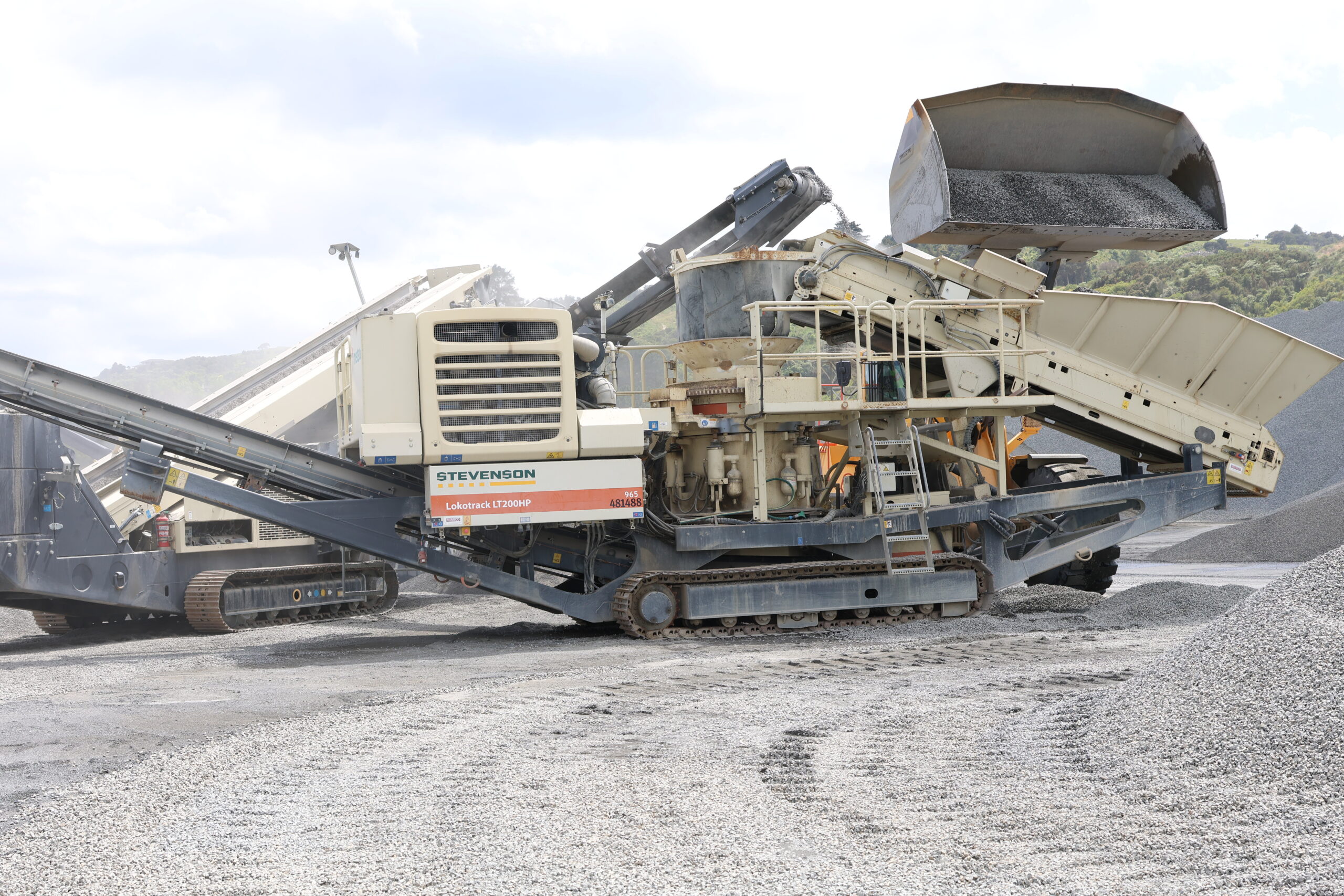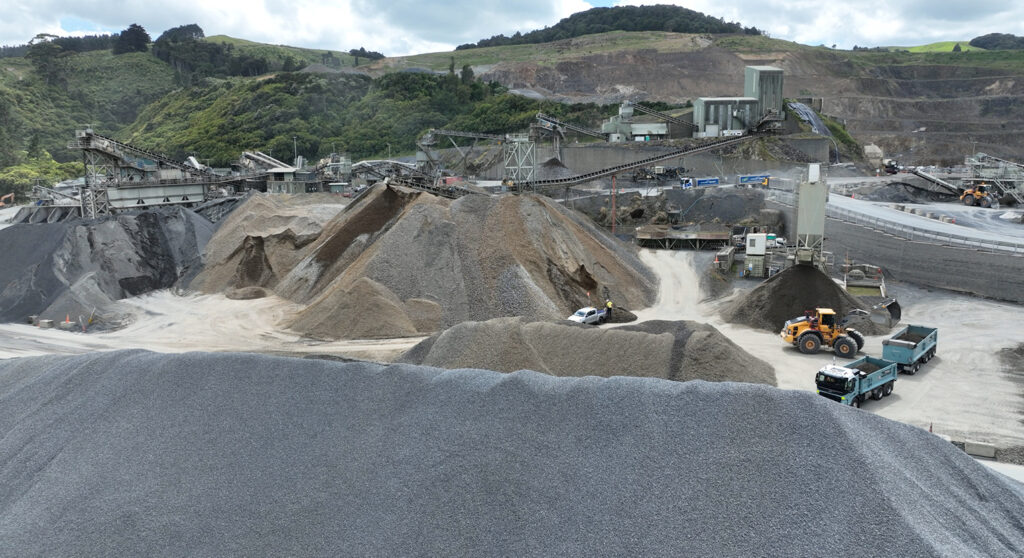crushing plants.
Crushing plants reduce raw material into set sizes, supporting efficient screening, stockpiling, and washing in high-output operations.
First-stage reduction for rock, concrete, and waste
PURPOSE-BUILT FOR PRIMARY REDUCTION.
Crushing plants are essential in reducing blasted rock, concrete, and recycled material into consistent, manageable sizes for further processing. This first-stage reduction supports screening, stacking, and washing systems throughout the material handling chain.
Available in both mobile and fixed configurations, these systems are selected based on capacity, feed material, and output spec. Whether for a quarry, demolition site, or recycling yard, crushing plants enable efficient, high-volume production tailored to New Zealand conditions
Choose mobile or fixed to suit your site and workflow
choose by configuration.
finance that works for you
Get tailored finance solutions to spread the cost of your crushing plant investment. Quick approvals, competitive rates, and terms that work with your cashflow.
A crusher for every job
The full line-up.
Key crushing Features
more about crushers.
LARGE FEED HANDLING
Wide feed openings and optimised chamber design process oversize rock and reinforced concrete without pre-splitting, improving production efficiency on tough materials.
CONFIGURED FOR MATERIAL FLOW
Jaw crushers for coarse reduction, cone crushers for secondary sizing, and impact units for shaping – each setup tailored for throughput, material type, and output spec.
CONTINUOUS-DUTY DESIGN
Hydraulic setting adjustments and automation reduce stoppages, while energy-efficient drives maintain consistent output under heavy load.
BUILT FOR DEMANDING MATERIALS
Wear-resistant liners, heavy-duty structural components, and straightforward service access ensure long-term reliability across high-impact, abrasive material streams. Built to handle shock loading, vibration, and uneven feed, these crushers maintain uptime in demanding conditions with minimal interruption.

Learn More
need answers?
Frequently Asked Questions.
What type of crusher is best for hard rock applications?
For high-strength, abrasive rock such as basalt or greywacke, a jaw crusher is typically used for primary reduction due to its compressive strength and large feed capacity. Cone crushers follow for secondary and tertiary stages, offering tighter control over product sizing and shape.
How do I choose between mobile and fixed crushing plants?
Mobile plants are ideal for short-term projects or sites with variable locations, offering fast setup and easy transport. Fixed plants suit high-volume, long-term operations where mobility isn’t required and infrastructure allows for permanent installation.
What size feed can Metso jaw crushers handle?
Metso jaw crushers can typically accept feed sizes up to 700 mm, depending on the model. Oversized material may require pre-splitting or controlled blasting to maintain consistent throughput and minimise wear.
How is product size controlled on a crushing plant?
Product size is managed through adjustable crusher settings – typically hydraulic for fast changes – and by choosing the appropriate chamber design and crusher type. Screening decks downstream also play a role in separating oversized material for reprocessing.
What are common causes of crusher blockages or downtime?
Blockages often result from inconsistent feed, overly wet material, or tramp iron entering the chamber. Downtime can also stem from worn wear parts or hydraulic issues. A proper pre-screen and regular maintenance scheduling can significantly reduce these risks.
What routine maintenance is required for crushing plants?
Daily checks include oil levels, bearing temperatures, belt tension, and liner wear. Most Metso crushers are equipped with automated monitoring and greasing systems, reducing the need for manual inspection and extending uptime.
What is the expected liner life for Metso crushers?
Liner life depends heavily on feed material, crusher settings, and throughput. Under normal conditions, jaw and cone liners typically last 1,000-2,000 hours, while impact crusher blow bars may range from 400-800 hours. MIMICO can help optimise wear part selection based on your application.


